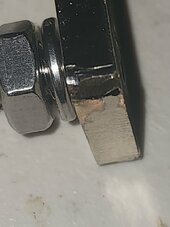I don't think anyone has collected a list of good chineese distributors - most just poop on them all as junk which isn't the case, but it is hard to sort it out and what is good one week is bad the next.
I am a real big fan of the LiTime brand - everything I have gotten from them has been top quality and when I have contacted their support via email it is a 24hour turn-around.
Their bus bars are brass, but doing my independant calcuation of the size and from what the engineer said they are good to about 350amps. I filed off a corner to check and found them to be brass plated with copper plated with nickle. I ended up exchanging emails with one of their engineers about how they calculated the size of the bus bars they sell and what the quality of the brass they used is.
View attachment 223560
Very impressed with them.
You will find the same problem with blue sea/Eaton fuse blocks. If you go to a website that sells nothing but lugs you will see they sell wide/narrow/long/skinny lugs if you care to dig. What you can get off amazon is the most common sized lugs. Filing off a bit from the tip doesn't hurt a thing, all that matters is the contact patch where the two pieces touch each other. That is where the current is carried.
If you haven't got it, get a tub of no-ox-id special A. It is a contact grease you can put on all your touch points to prevent corrosion and give it better contact.
I have a background in electronics and have done pretty much everything at one time or another since I was a kid. I spend a lot of time reading and understanding what it is I am trying to do so don't get yourself down if you take a while and waste some $$ along the way.
Here is a book that goes over the basics of electronics - get that and a raspberry Pi kit with a breadboard and you can loose yourself for weeks.



